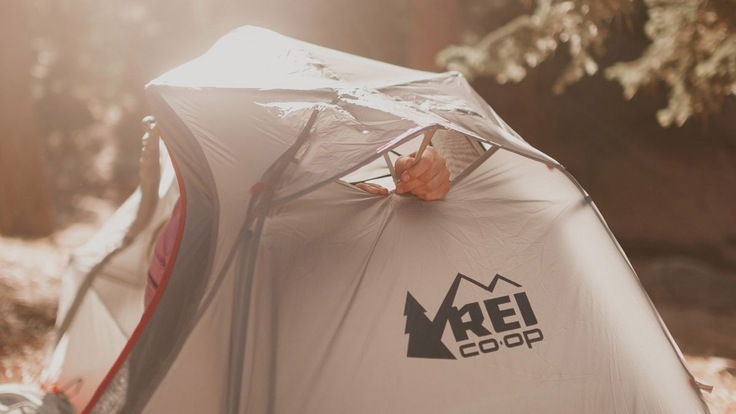A gentle pitter patter on your rainfly can be a soothing natural sound when you're lying down at night in your tent. If those drips start originating inside your tent, though, it becomes a highly unpleasant resting place. And, under the right circumstances, the culprit—condensation—can infiltrate even the most well-engineered shelter.
So, how do you prevent condensation? The answer boils down to three strategies:
- Pick an optimum place to pitch your tent (answer: under trees)
- Minimize the sources of additional moisture inside your tent
- Ventilate, ventilate, ventilate
When warm air contacts a cold surface, condensation can happen. You see this effect in a mug of cold beer on a hot day. The same thing can happen in a tent: Warm air inside moves out to the rainfly, which is cooler because the outside air is cooler. The result is condensation on the underside of your rainfly. That water may then saturate your tent fabric or drip through a mesh window.
Strategy No. 1: Pitch on dry ground, preferably under trees.
Trees are your friend because air under trees tends to be warmer (as opposed to say, a wide open field), so your rainfly will be warmer, too. In addition, condensation happens on top of their foliage, instead of on your tent.
Strategy No. 2: Minimize the additional moisture sources inside your tent.
Moisture in a tent comes from three places:
- The existing moisture level in the air itself (humidity)
- Moisture added to your inner airspace by each breath you take at night
- Moisture added by any wet items you might have inside your tent
Once you've picked a place to pitch your tent, the humidity level of the air is set. And, though you'll breathe out moisture throughout the night, not breathing isn't an option. But you can control whether you stash or hang wet clothes inside a tent. If condensation control is the goal, then dry things out during the day (and never let a soggy doggy sleep inside your tent).
Strategy No. 3: Ventilate early, often and fully.
Air inside the tent is almost always more humid than the surrounding air, so you want to replace the interior air with the drier outside air. Ventilation strategies include the following:
- If there's a gentle breeze, pitch the tent so the door is facing into it.
- Stake the tent out tautly and tension the fly in order to maximize the airspace between it and the wall of the tent.
- Open all rainfly doors and rollup sections; only deploy them if rain starts to fall.
- Open up all rainfly vents, especially opposing ones for cross ventilation.
- Open up all inner tent windows.
It's rare for your rainfly to be dry come morning, but if you follow these tips, most of the moisture should stay on the outside—where it belongs.

